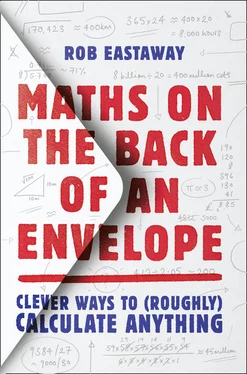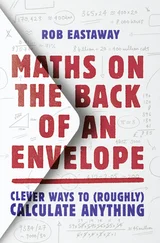Other questionable numbers require a little more thought. The National Survey of Sexual Attitudes has been published every 10 years since 1990. It gives an overview of sexual behaviour across Britain.
One statistic that often draws attention when the report is published is the number of sexual partners that the average man and woman has had in their lifetime.
The figures in the first three reports were as follows:
| Average (mean) number of opposite-sex partners in lifetime (ages 16–44) |
|
Men |
Women |
| 1990–91 |
8.6 |
3.7 |
| 1999–2001 |
12.6 |
6.5 |
| 2010–2012 |
11.7 |
7.7 |
The figures appear quite revealing, with a surge in the number of partners during the 1990s, while the early 2000s saw a slight decline for men and an increase for women.
But there is something odd about these numbers. When sexual activity happens between two opposite-sex people, the overall ‘tally’ for all men and women increases by one. Some people will be far more promiscuous than others, but across the whole population, it is an incontravertible fact of life that the total number of male partners for women will be the same as the number of women partners for men. In other words, the two averages ought to be the same.
There are ways you can attempt to explain the difference. For example, perhaps the survey is not truly representative – maybe there is a large group of men who have sex with a small group of women that are not covered in the survey.
However, there is a more likely explanation, which is that somebody is lying. The researchers are relying on individuals’ honesty – and memory – to get these statistics, with no way of checking if the numbers are right.
What appears to be happening is that either men are exaggerating, or women are understating, their experience. Possibly both. Or it might just be that the experience was more memorable for the men than for the women. But whatever the explanation, we have some authentic-looking numbers here that under scrutiny don’t add up.
THE CASE FOR BACK-OF-ENVELOPE THINKING
I hope this opening section has demonstrated why, in many situations, quoting a number to more than one or two significant figures is misleading, and can even lull us into a false sense of certainty. Why? Because a number quoted to that precision implies that it is accurate; in other words, that the ‘true’ answer will be very close to that. Calculators and spreadsheets have taken much of the pain out of calculation, but they have also created the illusion that any numerical problem has an answer that can be quoted to several decimal places.
There are, of course, situations where it is important to know a number to more than three significant figures. Here are a few of them:
In financial accounts and reports. If a company has made a profit of £2,407,884, there will be some people for whom that £884 at the end is important.
When trying to detect small changes. Astronomers looking to see if a remote object in the sky has shifted in orbit might find useful information in the tenth significant figure, or even more.
Similarly in the high end of physics there are quantities linked to the atom that are known to at least 10 significant figures.
For precision measurements such as those involved in GPS, which is identifying the location of your car or your destination, and where the fifth significant figure might mean the difference between pulling up outside your friend’s house and driving into a pond.
But take a look at the numbers quoted in the news – they might be in a government announcement, a sports report or a business forecast – and you’ll find remarkably few numbers where there is any value in knowing them to four or more significant figures.
And if we’re mainly dealing with numbers with so few significant figures, the calculations we need to make to find those numbers are going to be simpler. So simple, indeed, that we ought to be able to do most of them on the back of an envelope or even, with practice, in our heads.
Конец ознакомительного фрагмента.
Текст предоставлен ООО «ЛитРес».
Прочитайте эту книгу целиком, купив полную легальную версию на ЛитРес.
Безопасно оплатить книгу можно банковской картой Visa, MasterCard, Maestro, со счета мобильного телефона, с платежного терминала, в салоне МТС или Связной, через PayPal, WebMoney, Яндекс.Деньги, QIWI Кошелек, бонусными картами или другим удобным Вам способом.












